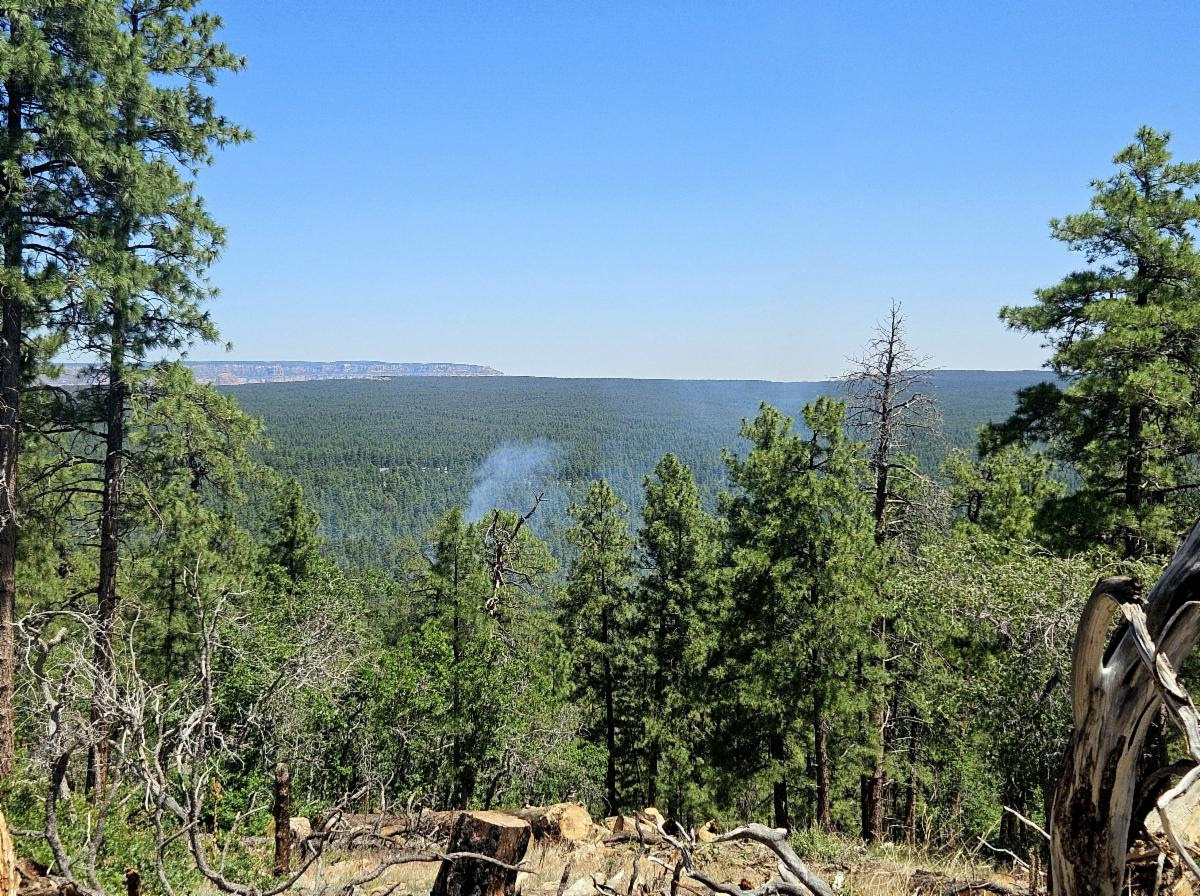New lightning-caused fire on Tusayan Ranger District
A new lightning-caused wildfire discovered last week east of Tusayan will be managed in a confine and contain strategy within designated areas to reduce fuel loads and promote healthier landscapes.
The Lockett Fire started on June 29 and is located approximately 12 miles east of Tusayan along the Coconino Rim, between Forest Road 307 and Forest Road 310. It is currently 16 acres burning in ponderosa pine forest, moving with a slow rate of spread and consuming pine needle duff and dead-and-down woody debris and stumps on the forest floor. This fire is burning in the footprint of the 2014 Belknap Fire.
The fire is expected to experience slow-t0-moderate growth given the warmer, drier weather in the forecast, steep terrain, and available fuels. Fire managers will manage the Lockett Fire in a confine and contain strategy within a designated area as long as it continues burning in this manner and conditions allow crews to safely do so. The intended outcome of this fire includes encouraging the growth of native plants, increasing species diversity in the understory, and the restoration of wildlife habitat.
A 3-mile section of the Arizona Trail will be temporarily rerouted along Forest Road 310.
Fire crews from the USDA Forest Service are patrolling, collecting data on fire behavior and on-the-ground conditions, and preparing roads and other natural control features to confine the fire within the designated area.
Many other specialists are involved in managing this incident. Wildlife biologists, botanists, and archeologists are helping to ensure that natural and cultural resources are protected, a meteorologist is providing current and forecast weather information, and air resource advisors to monitor and model smoke production and dispersal.
Smoke may be visible from various forest roads in and around the vicinity, as well as along State Route 64/East Rim Drive within Grand Canyon National Park.
The Kaibab National Forest is a fire-adapted ecosystem, with native species, such as the Ponderosa pine, dependent upon frequent, lower-intensity fire to thrive. The thick bark of Ponderosa pines protects trees from all but the most intense fires, and fire on the forest floor provides a nutrient-rich seedbed for the next generation of vegetation to succeed. Fire also plays a crucial role in breaking down forest floor debris, such as fallen leaves, needles, branches, and trees, a process which normally occurs rapidly in more moisture-laden environments but can take decades in the arid Southwest. By using both prescribed fires and naturally occurring fires when conditions safely allow at regular intervals, future fires on the Kaibab will be less intense and produce less smoke, benefiting the ecosystem and those around it.
Managing naturally caused wildfires across the landscape is a very effective tool in restoring the forest to a healthier condition, and these efforts align with the Forest Service's 10-year Wildfire Crisis Strategy, which aims to increase the use of fire on the landscape as well as other treatments to improve forest resiliency for generations to come.
Additional information can be found on InciWeb, the Kaibab NF website, X, Facebook, Flickr, or by calling local ranger stations.


